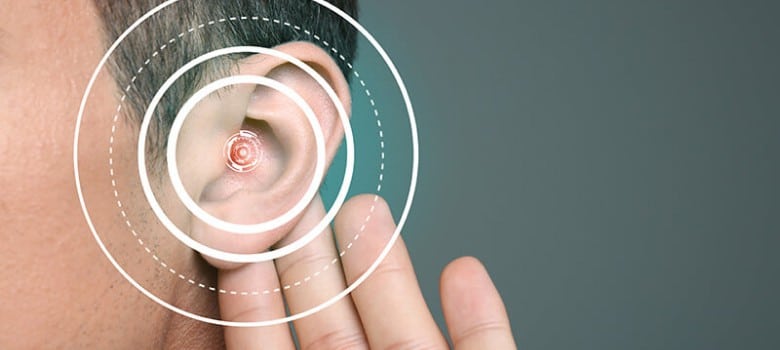Understanding Sound Amplification
Hearing is a precious sense that connects you to the world around you. It allows you to engage in conversations, appreciate music, and be aware of your environment. However, for many Australians, hearing loss can pose significant challenges to daily life.
This is where hearing aids can provide life-changing support by enhancing and restoring your ability to hear. Whether you, or a loved one, suffer from hearing loss, you may wonder how hearing aids work.
In this article, we delve into the fascinating technology behind hearing aids, uncover the science behind their functionality, explore the evolution of hearing aid technology, and understand how they are transforming lives.
Understanding Hearing Loss
Before diving into the mechanics of hearing aids, it’s important to grasp the basics of hearing loss.
Hearing loss can occur due to a variety of reasons, including age, genetics, exposure to loud noises, and certain medical conditions. The common denominator in many cases is a diminished ability of the auditory system to transmit and process sound waves effectively.
The Components of a Hearing Aid
A hearing aid consists of intricate components that work harmoniously to amplify sound.
These primary components include:
- Microphone: This part of the hearing aid picks up surrounding sounds, converting them into electrical signals.
- Amplifier: The electrical signals from the microphone are then sent to the amplifier, which boosts their strength.
- Receiver: Once the signals are amplified, they are transmitted to the receiver, which converts the electrical signals back into sound waves.
- Battery: Hearing aids are powered by small batteries, which can be disposable or rechargeable, providing the necessary energy to operate the device.
- Digital Processor: Modern hearing aids often incorporate digital processors that can adjust sound settings based on the user’s preferences and the environment.
Concerned about hearing loss? Discover our Hearing Test services
The Process of Sound Amplification
The magic of hearing aids lies in their ability to capture, enhance, and deliver sound to the user’s ears. Here’s a simplified breakdown of the process:
Sound Capture: The journey begins with the microphone. It picks up sounds from the environment, just like our ears do. However, these sounds are in the form of acoustic waves.
Signal Conversion: The microphone converts the acoustic waves into electrical signals. These signals are essentially a representation of the sound’s amplitude (loudness) and frequency (pitch).
Amplification: The electrical signals are then sent to the amplifier, which increases their strength. This step is crucial for individuals with hearing loss, as it ensures that even weak sounds become audible.
Digital Processing: In advanced hearing aids, a digital processor comes into play. This processor can analyse the incoming signals and make adjustments based on the user’s hearing profile and the environment. It can suppress background noise, enhance speech frequencies, and even detect feedback to prevent whistling sounds.
Sound Reproduction: The amplified and processed signals are then delivered to the receiver, where they are converted back into sound waves.
Into the Ear: The sound waves produced by the receiver are now in a form that can be channelled into the ear canal. This is typically done through a speaker or a tube.
Auditory Nerve Stimulation: The amplified sound waves travel through the ear canal and reach the inner ear. Here, they stimulate the hair cells in the cochlea—a spiral-shaped organ responsible for converting sound vibrations into electrical signals that the brain can interpret.
Perception of Sound: Finally, these electrical signals are transmitted to the brain via the auditory nerve. The brain processes these signals, allowing us to perceive and understand the sounds we hear.
Hearing aids are designed to seamlessly integrate into your life, helping you regain the joy of hearing and participating in conversations. Thanks to advancements in technology, hearing aids have become more discreet, efficient, and customisable than ever before.
From Bluetooth connectivity to smartphone apps that fine-tune settings, these devices are a testament to the remarkable progress made in the field of audiology.
Common Types of Hearing Aids
Hearing aids come in various styles to suit different preferences and levels of hearing loss:
Behind-the-Ear (BTE): These hearing aids rest behind the ear and are connected to a custom an earpiece that fits inside the ear canal. They are powerful and suitable for a wide range of hearing loss.
In-the-Ear (ITE): These are custom-made devices that fit entirely within the outer ear. They are larger than canal-style hearing aids and can accommodate additional features like volume controls.
In-the-Canal (ITC) and Completely-in-the-Canal (CIC): These are smaller and more discreet custom devices, fitting partially or entirely within the ear canal. They are often less visible but might have fewer advanced features due to their size.
Receiver-in-Canal (RIC) or Receiver-in-the-Ear (RITE): These have a behind-the-ear component connected to an earpiece by a thin wire. The receiver sits in the ear canal, providing a more natural sound experience. These devices are often the most advanced, technology wise, and provide features such as bluetooth connectivity and rechargeability.
Don’t Suffer Through Hearing Loss
Hearing devices have transcended their initial purpose of amplifying sound and have become technologically advanced tools that empower individuals to engage fully in the world around them.
As technology continues to evolve, the future of hearing aids is bright, promising even more personalised and seamless auditory experiences for those in need. So, if you or a loved one is struggling with hearing loss, take action and take advantage of the range of hearing aid brands available.
Where Can I Go for High-Quality Hearing Treatment?
Sometimes it helps to talk to a team of experts to determine whether a hearing test is right for you. That’s where Hearing and Audiology can help.
Call us on (08) 9388 8003 to chat with our friendly, local staff and enquire as to whether a hearing test could be right for you. You can also book an appointment online or get in touch to find out what coverage you qualify for and what to expect from the process in any one of our offices throughout Western Australia.
The team at Hearing & Audiology has over 35 years of experience providing support for people suffering from hearing problems and loss. We’re local, Australia-trained, and dedicated to providing state-of-the-art hearing solutions to every one of our clients.


